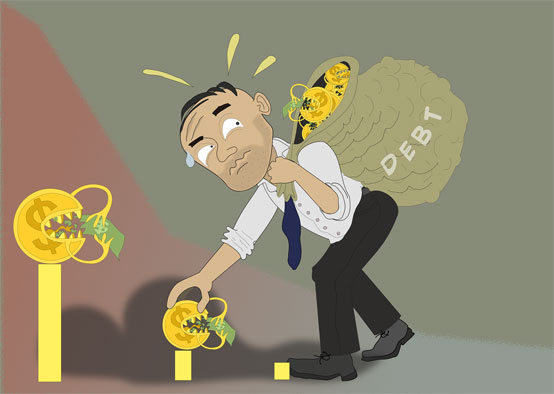Central Group Mortgage Investment Psychology: How to Avoid Emotional Investing
As the market ebbs and flows, the political and economic situation is ever-changing, the news is overwhelming, and investors’ moods inevitably rise and fall. How to maintain objectivity and avoid excessive emotion in investment? Let’s talk about some of our own thoughts.
Tip 1/ Reasonable expectations
The average annualized return of Warren Buffett is only some twenty, we as ordinary investors, expect long-term annualized more than Warren Buffett that is to add trouble. 10%-15% annualized return is more reasonable. Emotions are proportional to desire and inversely proportional to ability. If you can reasonably expect and constantly improve your ability, you will have much less anxiety in investing.
Tip 2/ Make a plan
The number one way to avoid making emotionally driven investment decisions is to follow your long-term investment plan. Many investors choose to listen to the advice of their investment advisor in order to reap the rewards, but in a highly volatile market environment, investors tend to abandon the long-term investment plan given by their advisor and invest flexibly according to the market. In fact, the detailed investment plan developed by your investment advisor can be a guide to your buying and selling decisions. Even if the plan does not exactly match the short-term direction of the market, it will still provide good returns in the long run. Careful implementation of this investment plan will help you weather short-term volatility, thereby reducing and alleviating the short-term anxiety associated with market fluctuations.
Tip 3/ See volatility as an opportunity
Another benefit of sticking to a long-term investment plan is that it allows investors to take advantage of opportunities during periods of volatility. For example, a market decline may allow an investor to buy a stock at $25 that was trading at $50 a short time ago. This lowers the investor’s cost per share and helps improve the overall return of the portfolio when the market rebounds again.
A good way to take advantage of lower prices without being driven by sentiment is through cost averaging. This is the process of investing equal amounts of money on a regular basis. By continuing to invest regardless of the asset’s current share price, you can buy more shares when prices are down and fewer shares when prices are high.
Tip 4/ Periodically balancing your portfolio
Periodically balancing your portfolio is the process of rebalancing your portfolio’s asset mix back to your target allocation when your investment plan gets out of balance due to market fluctuations. For example, suppose you own both stocks and bonds. When stock prices fall, the investor’s portfolio owns a smaller percentage of stocks compared to bonds. Using an opportunistic rebalancing strategy, sell some of your bonds to buy stocks, thereby increasing your percentage of stocks to the target you want. Periodically rebalancing your portfolio in this way is a strategy designed to help you sell high and buy low without the risky mistakes that often occur with short-term tactical swings.














